Treasure baskets and heuristic play
by Anni McTavish What are treasure baskets? “Treasure Baskets” are a collection of ordinary household objects, that are chosen to offer variety and fascination for
Clay is natural, it comes from the earth. It is cool to the touch and soft on our skin. It has a deep earthy smell which invites you in. Clay can be sculpted far more intricately than play dough. Just by covering it over, clay can be returned to day-after-day, added to, sculpted, encouraging sustained inquiry and creativity.
Clay is strong, it can be sculpted higher and higher, on a much larger scale, encouraging problem-solving and critical thinking.
from Authentic art materials for toddlers: introducing clay
I was lucky enough to visit Rachel Keeling Nursery School on the day a group of children put their finishing touches to a collaborative sculpture they had been supported in creating together.
The creative learning journey had begun three weeks ago with children playing with and exploring clay. They learnt about and experienced first hand ways of working with the medium by pinching, twisting, rolling and hammering. Children were then supported in their creations by looking at images of sculptures by other artists as stimulus and for inspiration. They then created their own sculptures which they talked about openly with, creating stories and illustrations.
In the last week of of this project a group of children worked collaboratively, talking, listening, problem solving, reflecting on and embellishing a large piece of art through the medium of clay. They created a thing of great beauty and returned to paint it once the clay was dry.
Once it had been painted, the children were waiting to give it a name. When consulted about valuing their stunning piece, they thought it should cost from £4 to £24 to £60 to £100 to buy. However, the team at Rachel Keeling say that they feel that it is priceless! Certainly the learning journey and experiential learning over the three week project was impossible to value.
You can view the journey and their final clay sculpture on their blog:
Clay is a natural resource that has no right or wrong way to be used.
(from Play idea: clay on New Zealand’s government website for early education)
Page updated Autumn 2019 by Cathy Gunning.
by Anni McTavish What are treasure baskets? “Treasure Baskets” are a collection of ordinary household objects, that are chosen to offer variety and fascination for
by Debi Keyte-Hartland Art in the early years To express, simply means to communicate. The expressive arts, therefore, are languages of communication, able to express
by Debi Keyte- Hartland The term “Loose Parts” was coined by Simon Nicholson, a British architect and designer whose parents were artists Barbara Hepworth and
Press release: May 2022 Early Education and Early Childhood Music practitioners Katie Neilson, Rosie Adediran and Nicola Burke are pleased to announce they have been
The role of music in the early years Everyone knows how much young children love to sing and dance, but all too often music is
Young children are artists. They use all sorts of materials to show what they have noticed about the world. They might draw the rain falling
Messy play provides so many explorative and investigative experiences, which promote so many of the characteristics of effective learning. Some easy ideas to start you
How can I be more creative? Be inspired by our guest bloggers from Rachel Keeling nursery school who shared about their clay and sculpture project. Have
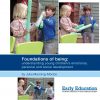
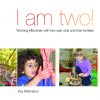

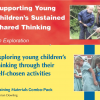
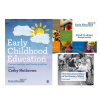
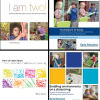
Early Education
2 Victoria Square
St Albans
AL1 3TF
T: 01727 884925
E: office@early-education.org.uk